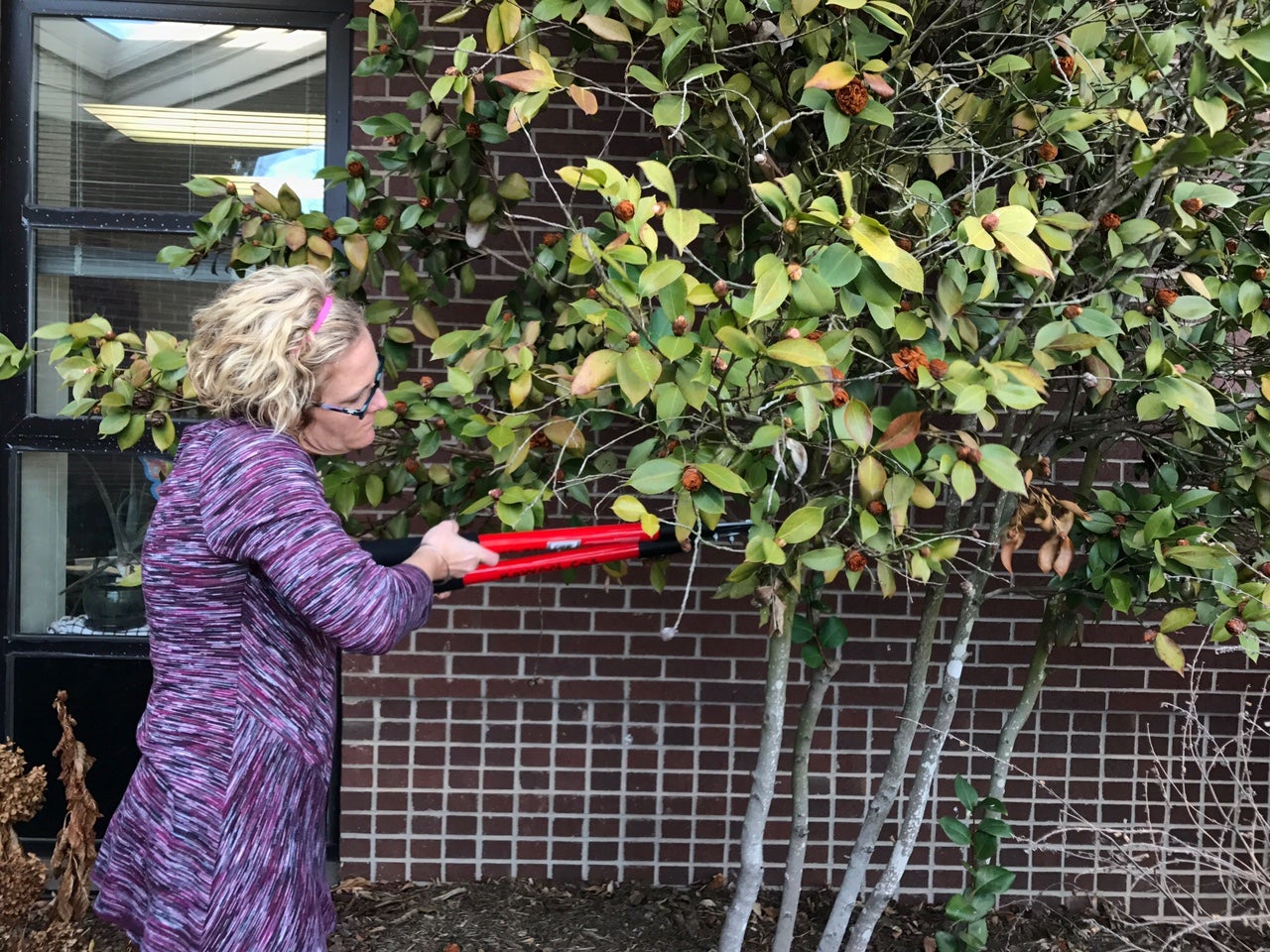Danelle Cutting: Step away from the pruning clippers
Published 12:14 am Sunday, September 24, 2017

- Amy Lynn Albertson prunes a dead branch.
Be conservative when trimming back in the fall
Pruning is probably one of the hottest topics we cover in Extension, and for some reason I receive the most pruning questions in the fall.
We do not typically recommend pruning in the fall, because pruning encourages new growth. New growth is very sensitive to cold/frost temperatures and when do we typically receive our first killing frost? In the fall. That is probably the biggest most important reason to understand why we do not recommend pruning in the fall. However, there are a few things one can prune and do for routine maintenance while temperatures are nice to work outside.
Gardeners can prune blackberry plants in the fall, if you have the right kind — floricane-producing blackberries (the fruit is produced on second year’s growth), which is what most growers have. The other kind is primocane-fruiting blackberry, which produces fruit on first year growth).
After the blackberries are harvested, the cane begins to die and it turns a dull gray color; these are the canes you can prune out and destroy. Do this to help open the blackberry plant to encourage better air flow, remove potential pest and disease issues, and you are getting rid of dead plant material. Do not throw the canes on the ground because that will only harbor disease and pests you want to get rid of through pruning. You can burn or throw the canes in the trash; just get them off your property.
The next three tips I have can actually be done anytime of the year but fit very well since our area and surrounding areas have received lots of rain and wind.
In our pruning classes we call this the three D’s — removing the dead, diseased and damaged.
With the storms we have had, many trees and plants now have dead limbs or damaged branches. These can be pruned out of the trees and shrubs to reduce disease and prevent further injury.
We have also had a tremendous year for diseases, and I have received at least one call per week on potential disease on plants. If you have a shrub or tree that is diseased and experiencing limb dieback, those are perfect candidates for pruning. Just remember, if you know you have diseased limbs, you should sanitize your pruning shearers between each cut.
For other pruning, I recommend waiting till February through early March. There are only a few other trees and shrubs that are pruned other times of the year.
If you would like more information on pruning visit these websites: https://polk.ces.ncsu.edu/pruningcalendar/ and https://content.ces.ncsu.edu/general-pruning-techniques or call or email your local Cooperative Extension agent, Danelle Cutting, at 704-216-8970 or danelle_cutting@ncsu.edu.




